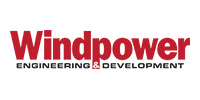 Wind turbines are strong, durable machines, but they are susceptible to damage by the wind they manage to harness into energy.
Wind turbines are strong, durable machines, but they are susceptible to damage by the wind they manage to harness into energy.
To help protect the wind turbine from damage during excessive wind speeds or during a grid power loss, wind turbines are built with emergency pitch control systems. The pitch system is responsible for shifting the turbine’s blades out of the wind and thereby slowing down the rotor to stop the turbine from spinning out of control.
The pitch system has no room for failure. It is an absolutely critical part of the wind turbine. Even when there is a redundancy system, wind farm operators want to be assured that the system will pitch all three blades successfully when necessary, since damaged turbines equate to millions of dollars in lost assets.
The vital part to the successful operation of the pitch system is the system’s energy storage backup power, which is served by two different storage technologies for electric systems: ultracapacitors (also called supercapacitors or electric double-layer capacitors) and lead-acid batteries.
Batteries or ultracapacitors for power delivery
Both ultracapacitors and lead-acid batteries are used as backup energy storage for the wind pitch application. Both technologies provide the necessary power to rotate the blades during an emergency shut-down situation.
In Europe, wind farms trend toward ultracapacitor-based backup energy storage for pitch control due to the technology’s several advantages over lead-acid batteries for this application, including significantly longer life, reliable performance in very hot and cold climate conditions, and minimal maintenance needs compared to batteries, whose lead-acid chemistry is vulnerable to varying ambient temperature conditions.





